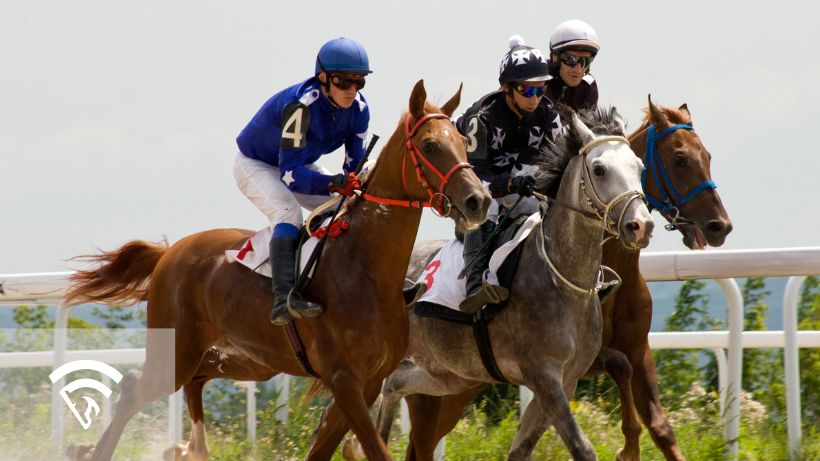What is a One-Turn Mile vs. a Two-Turn Mile in Horse Racing?
A one-turn mile in horse racing is a one-mile race held on a track layout where the entire distance is covered in a single sweeping turn before reaching the stretch. By contrast, a two-turn mile involves two distinct turns, often on an oval track that measures less than a mile in circumference. Although both races share the same distance, these design variations have a significant impact on pace, positioning, and race tactics.
Key Differences Between One-Turn and Two-Turn Miles
-
Track Configuration
- One-Turn Mile: Typically seen at larger tracks (e.g., Belmont Park in the U.S.), where a mile can be set up from the chute to the finish line without requiring the field to negotiate multiple bends.
- Two-Turn Mile: Found at smaller or standard-mile tracks, requiring horses to corner twice over the same distance, influencing how speed is distributed.
-
Pace and Running Style
- One-Turn Mile: Horses can build and maintain momentum, often favoring runners with strong cruising speed and stamina. Early position can be important but not as critical as handling corners.
- Two-Turn Mile: Horses encounter shorter straightaways and must navigate turns more precisely, favoring those that can corner well and re-accelerate effectively coming out of each bend.
-
Strategic Positioning
- One-Turn Mile: Jockeys may jockey (no pun intended) for good early positioning on the long backstretch, then time a late move without worrying about a second turn.
- Two-Turn Mile: The field typically bunches up more around each turn, requiring careful ground-saving tactics or well-timed moves to avoid traffic on tighter layouts.
-
Impact on Handicapping
- One-Turn Mile: Handicappers often consider factors like cruising speed, the ability to run comfortably at a sustained pace, and how well a horse handles gradual turns.
- Two-Turn Mile: Horses that excel in cornering, manage traffic, or display tactical acceleration between turns may have an edge. Evaluating past performances at similar two-turn distances is particularly valuable.
Why Does This Distinction Matter?
-
Horse Suitability
Certain horses adapt better to a single, sweeping turn—often those with rangier strides—while more agile types might thrive in two-turn scenarios where they can handle tighter curves. -
Pace Scenarios
A long backstretch in a one-turn mile can encourage a steady tempo, whereas multiple turns in a two-turn mile can break up a race’s flow, favoring horses with stop-and-start acceleration. -
Betting Angles
Bettors often compare a horse’s prior success in one-turn vs. two-turn miles, looking at how track design influences past performances. Horses that have excelled on one layout may struggle or excel differently on the other. -
Race Strategy
Jockeys adapt riding styles, deciding whether to push early, sit off the pace, or wait to pounce based on the number of turns and length of the backstretch.
Tips for Handicapping One-Turn and Two-Turn Miles
-
Evaluate Track Records
- Check how a horse has fared at similarly configured tracks; strong performances in one-turn miles may not translate perfectly to two-turn scenarios.
-
Study Running Lines
- Identify horses with proven cornering ability or those that lose ground on the turn—such clues can make a decisive difference.
-
Assess Conformation
- Long-striding horses can struggle with sharper turns, whereas more compact horses may handle tighter turns more efficiently.
-
Account for Post Position
- In a two-turn mile, inside posts can help save ground, while outside posts may force a horse wider through each turn.
EquinEdge, although focused on AI-powered handicapping insights (including pace projections, speed figures, and real-time odds), can further guide your analysis when comparing a horse’s performance on one-turn vs. two-turn miles. Understanding these subtle track layout differences helps you capitalize on matchups that suit a horse’s running style, potentially improving your betting returns. Sign up with EquinEdge to get started.
